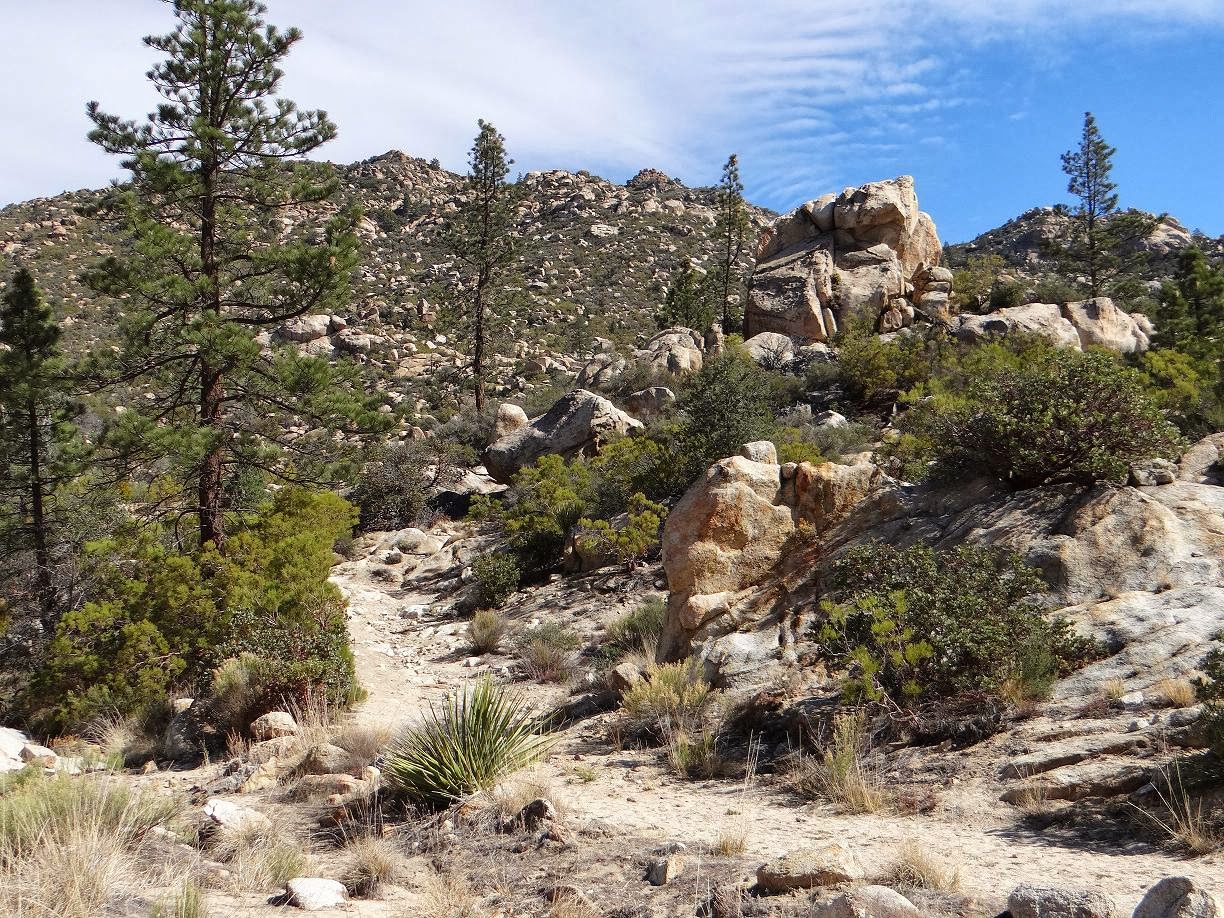This was a day to search for a glimmer of gold in the hills surrounding the ranches in Garner Valley.
As we hiked up the trail to abandoned gold mines from the late 1800's, it was easy to imagine being one of those early prospectors full of hope for a lucrative claim on the land.
Our destination, the Hemet Belle Mine was first developed in 1887 by the Chilson family. News of their modest success spread wide and others came to the area in search of their fortune. Along the way, we passed some old mining equipment left behind in the hills.
When we reached the first entrance to the mine, we were able to peak into the dark tunnels but not able to enter since they are now closed.
Very little gold was discovered in these mines. One of the biggest losers was an Englishman, Harold Kenworthy. He spent a fortune on mines that he purchased and he invested in building a town for the workers. Kenworthy may have been tricked by a "salted mine". Salting mines was a practice that some people used to fool potential buyers. A shotgun full of gold dust was shot at the walls to give it more glitter and value to the naive buyer.
One good outcome for these and other abandoned mines is the shelter they provide for bats. Protecting habitat for them is essential. Since 2006, over 5.7 million bats have died prematurely due to White-nosed Syndrome.This educational sign outside one of the entrances is full of information about these important but misunderstood creatures.Our recent bat encounter has intrigued me to learn more. Go to batcon.org .
I have plans to go back in the Summer. Next time, instead of looking for the glitter of gold, I'll be looking for the nightly flight of bats as they emerge from their home in the mines.














































